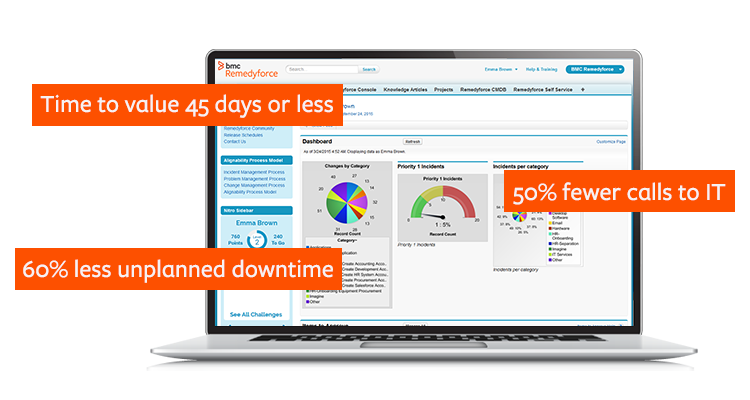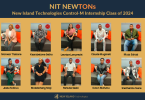In this Run and Reinvent podcast, I chat with Andrew Dorsey, IT business analyst for Goodman Manufacturing, a Houston-based manufacturer of heating and cooling systems, about how the company is using BMC Remedyforce in unique ways to meet its IT service management and business needs. Below is a condensed transcript of the conversation.
John Fulton: Can you tell us a little bit about what you know your current environment?
Andrew Dorsey: In the IT department, we do most of our IT support in house from our security analysts, network engineers, desktop service technicians, we have developers, even the first-tier support, the first line of defense, I like to say, of the service desk analysts. Now, we do outsource some of our operations work, but I’d say well over 90 percent of our IT support is handled in-house supporting around 7,000 employees.
John: Can you give a little bit of sort of history of how you came to arrive with Remedyforce?
Andrew: I’ve been with the company for 15 years, and since I’ve been here, we’ve always been a BMC shop. We started using Support Magic. That’s when I started with the company. And from Magic, we upgraded to Service Desk Express. I think Magic was coming to end of life. So, we moved to Service Desk Express. Then we tried Footprints for a little bit and quickly discovered that Remedyforce was the best solution for us now.
John: What was your experience of the move to the cloud? Was there any sort of resistance to considering or what was your experience there?
Andrew: There was some resistance. Remedyforce is one of the first cloud-based solutions we started using an IT. So, it was a lot of apprehension at first, but we got over it. There was some concern about personally identifiable information. We got around that just about, you know, working with our policies and procedures. Worked with the auditors and we made them happy.
John: Can you describe how you guys are using Remedyforce today within a traditional method?
Andrew: Before we had Remedyforce, we had RFCs, just “request for change.” Our RFCs, believe it or not, was just a Word document that we passed around to get signatures, and it was a mess. So now that we have Remedyforce, I’d say the change requests module has been the biggest change for us and one of the biggest benefits, because we’re better able now to track approvals, then track history, add notes, all those types of functions. So, it’s been a big help for us.
John: We talked about how Remedyforce sits on the Salesforce platform, and it really opens up an endless opportunity for our customers to go beyond sort of the traditional IT service management. Let’s talk a little bit about the innovation you guys have leveraged with Remedyforce, specifically talking about project management and time tracking. Can you describe that?
Andrew: With the project management, the company before was using a Web-based application called dotProject to track its project management. The users weren’t happy with it. I wasn’t involved in, you know, getting all the complaints. But I heard there was a need within the department, and I said, “Wait, before you purchase anything, let me see what I can do for you using Remedyforce.” I went to work, and about a week or two, I was able to configure, just using Remedyforce, you know, out of the box, I was able to configure Remedyforce in a way that allows us to track our project management. So, what the users do, or the project managers when they’re ready to initiate a project, I created a self-service form, they answer the questions or we’re going in the project. For example, the project name, the sponsor, function leader, all the normal things you need to know to initiate a project. And then they submit the form, it automatically creates a ticket and a task for each deliverable. So, the deliverable would be like the charter or the cost benefit analysis, the support documentation, all the normal documentation that comes along with … the deliverables that comes along with executing a project. And so, the project manager manages the main incident and the task get … our major PMO, the guy who’s over the department, he keeps the incident, and the individual project managers are assigned the task for each of the deliverables. So once, for example, a Project Manager completes the charter, the project manager would load the charter into of the task, you know, just attach it. And then it would go through the approval process associated with that task.
John: You didn’t do any code and you just sort of configured the different categories and certain fields to be able to track this within Remedyforce?
Andrew: No coding at all. I couldn’t even code as if my life depended on it. The most I know about Java is coffee. So, there’s that. But yes, there was no coding, it is just configuring what’s already out of the box to do what I need to do and that’s what I did. The approval process is tied to certain tasks. I created approval process and used the process builder to trigger the approval process based on certain criterion in the task. When the task is created and the category, for example, is charter, then it initiates the approval process based on that.
John: Can you provide some outcomes and benefits that you’ve seen resulting using the solution?
Andrew: With Remedyforce one of the primary benefits I’ve noticed is this the mobility. In IT, any IT person in any company across the America or the world from probably attest that during lunch breaks or walking between jobs, we often get stopped in hall. “Hey, Andrew, can you give me an update on this ticket?” Or, “I have this new issue that’s going on, and I could really use your help with it.” And we’ve been taught, and it’s been enforced, that we need to have an incident for everything that we do. That’s the only way we quantify our work to help us keep track and be accountable for the customer’s request. So, between jobs, or on breaks, we’re often stopped in the hall to say, “Hey, Andrew, I need help with this. Can you give me an update?” With Remedyforce, because it has the app, we can quickly go on the app on our phone or tablet – any mobile device – and either give the customer an update on an existing incident or open a new incident and give that person the incident, and we can say, “You can call the help desk to follow up to get a update on the ticket or if you see me, you can reference the same ticket number again, and I can use the app on my phone to pull it up.” So, the mobility has been such a big help for us. That’s the biggest benefit.







